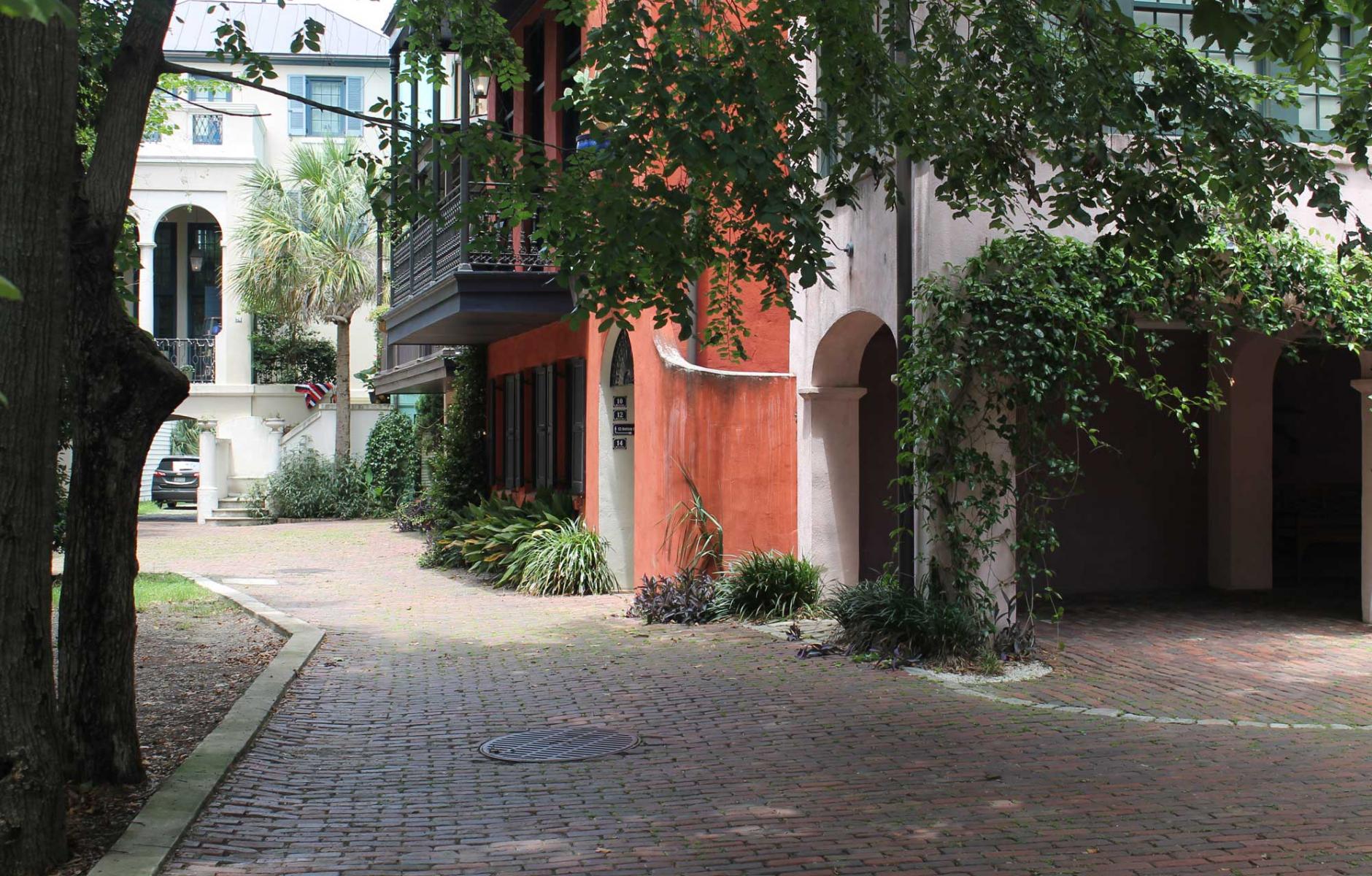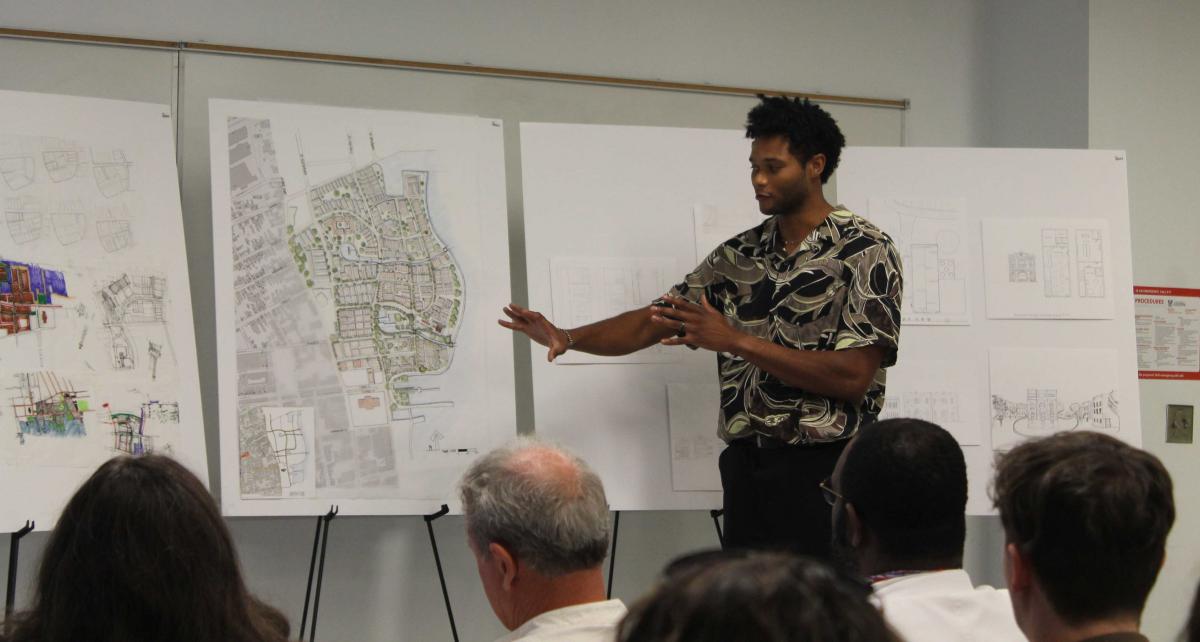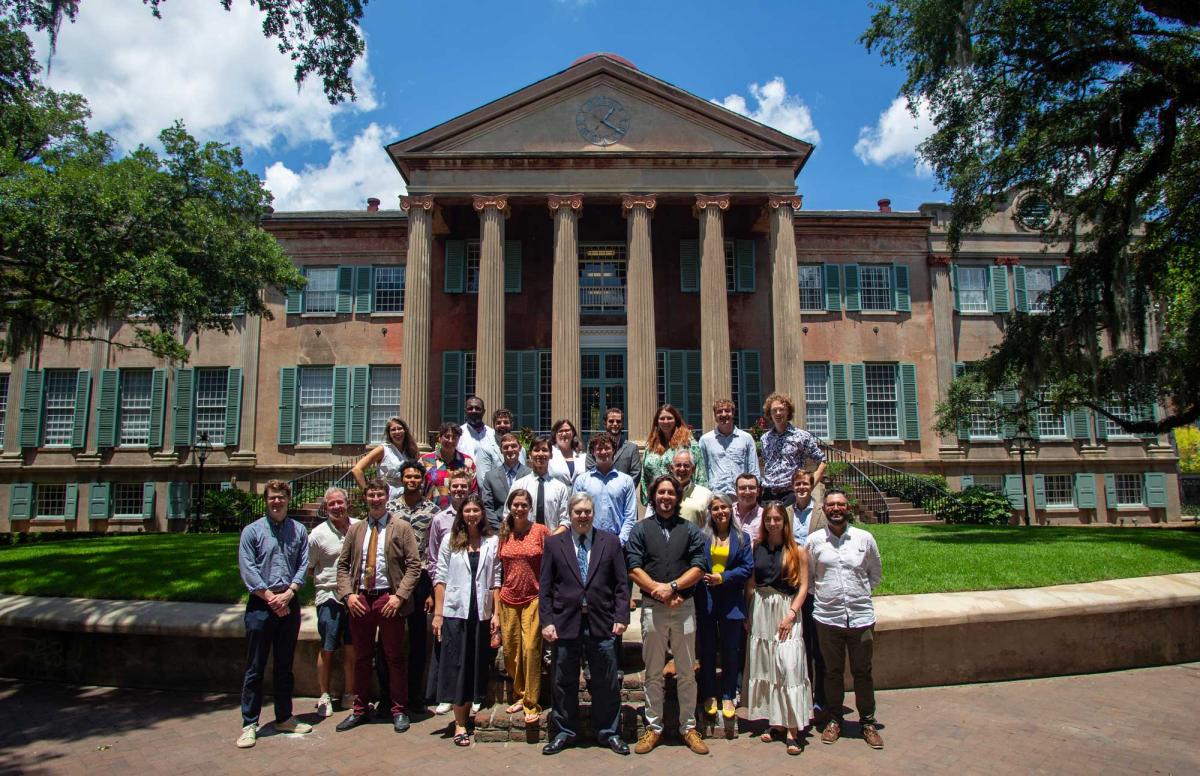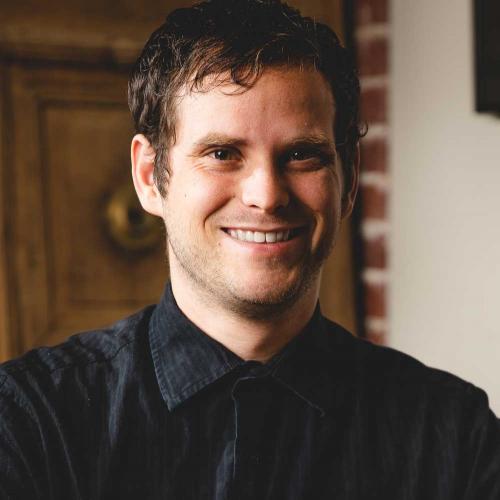
Learning from tradition in Charleston
The room filled with the murmur of nervous conversations and new friendships forming. Seventeen students, strangers only minutes before, gathered for our first Summer Studio. To begin, we asked each student to stand along a line across the room marking where they grew up, from "rural community" to "major city.” We then asked students to rearrange and stand where they most wanted to live now. Though most originated in the suburbs, none chose to remain there. Instead, they gravitated towards the poles, drawn to the strong character of thriving cities or small rural towns. Already, bonds formed as our students realized a shared desire to build more uplifting places—all taking the next step on their path to becoming citymakers.
My own steps into citymaking began years earlier as a project manager for Lew Oliver. In this role, while working on designs for Trilith, I witnessed the transformation of a fallow wheat field into a thriving community. There is a unique joy in laboring to craft a new town, forming its shape and watching local culture take root. Even so, in my architectural training at respected institutions, urbanism was simply not taught. I needed to fill in the gaps. I dove into the work of CNU, traveled to beloved urban places, and devoured every resource I could find. After more than a decade, I pieced together a working framework for understanding why certain places draw us in while others leave us feeling cold. This process was scattered and inefficient, though, and I began to wonder how many others were navigating this same fragmented path.
That question took on new urgency in 2023, when I attended the Let's Build a Beautiful City program, one of INTBAU's international summer schools. This program radiated joy, gathering individuals craving more beauty in their cities. Invigorated by their model, I returned home resolved to create something similar here in the United States. We lacked a place where people of all backgrounds could build a common foundation in beauty, resilience, and human-centered design within the American context.
Together with a few like-minded colleagues, I founded Citymakers Collective in December 2023. We had a clear purpose: to teach aspiring citymakers the holistic design principles of resilient, beautiful, and prosperous places. In the following months, we assembled a team of advisors and built a curriculum serving students across all citymaking professions. Collaborating with INTBAU USA, we designed a program bridging past and present, drawing from traditions that have guided citymakers for centuries. Charleston, South Carolina, became our classroom: a city beloved worldwide and facing grave challenges in the 21st Century.
Our inaugural cohort reflected a remarkable diversity: pastors, planning officials, architecture students, national policy consultants, software engineers, interior designers, and more. Ages ranged from teens to late-career professionals. Some students drove in while others flew across oceans. Half had no background in design; all shared a passion for citymaking. Over two weeks, they attended lectures, toured historic and newly-built neighborhoods, and channeled this knowledge into a final design proposal. Each group was assigned a site adjacent to Charleston's historic core and tasked with envisioning its future in ways that honored tradition while addressing current needs.

The work that followed was rigorous. In the heat of the Lowcountry summer, with long days and a relentless pace, students roamed the historic fabric of the city and produced hand-drawn proposals for a new extension of Charleston. Students trained in design worked alongside students trained with other expertise, all working to craft meaningful urban space. One of the more memorable moments came from a student working in public health. This student detailed a park at the intersection of a new multi-use trail and a vehicular street, anchored by a remnant of a historic structure. Weaving together fitness, heritage, greenspace, and community life, a wonderful space emerged. This concept sprang from a perspective of public health first and foremost yet resulted in subtle and powerful urban design. The artificial barriers of profession slipped away: urban design is public health, and public health is urban design. This proved true with each student. Their unique backgrounds, bolstered by a solid foundation in traditional urban design principles, resulted in a rich collection of ideas. This is the beauty of design: when we work towards a common goal and apply our own expertise, the resulting ideas can morph in completely unexpected ways.
We could not have been more encouraged by the success of this first Summer Studio. Just as our students discovered their place within a long tradition of urbanism, we also have built this program from the examples of others. For decades, organizations such as CNU, INTBAU, ICAA, and the Incremental Development Alliance have advanced citymaking education beyond academia. From the beginning, we actively designed our program not to compete with this ongoing work, but to complement it. By focusing on broad principles, we could give students a foundation from which to pursue more specialized paths through these allied organizations. In this way, we hope to serve as connectors within a larger movement.
This first studio was only the beginning. In the coming year, as we refine our curriculum and expand our reach, we are eager to build a network of professionals, students, and volunteers who share a belief that knowledge of effective urban design should be accessible to all. One of our students captured this spirit beautifully:
"Citymakers Collective Summer Studio will educate and inspire you to make the world a more beautiful place. The staff and like minds that find themselves in the heat of Charleston will give you life and ambition to demand and design a better built environment."
We are so grateful to see students walk away with renewed energy and skills for the work ahead. If this vision resonates with you, as a potential volunteer, donor, or curious colleague, we invite you to join us. You can explore ways to get involved here.





